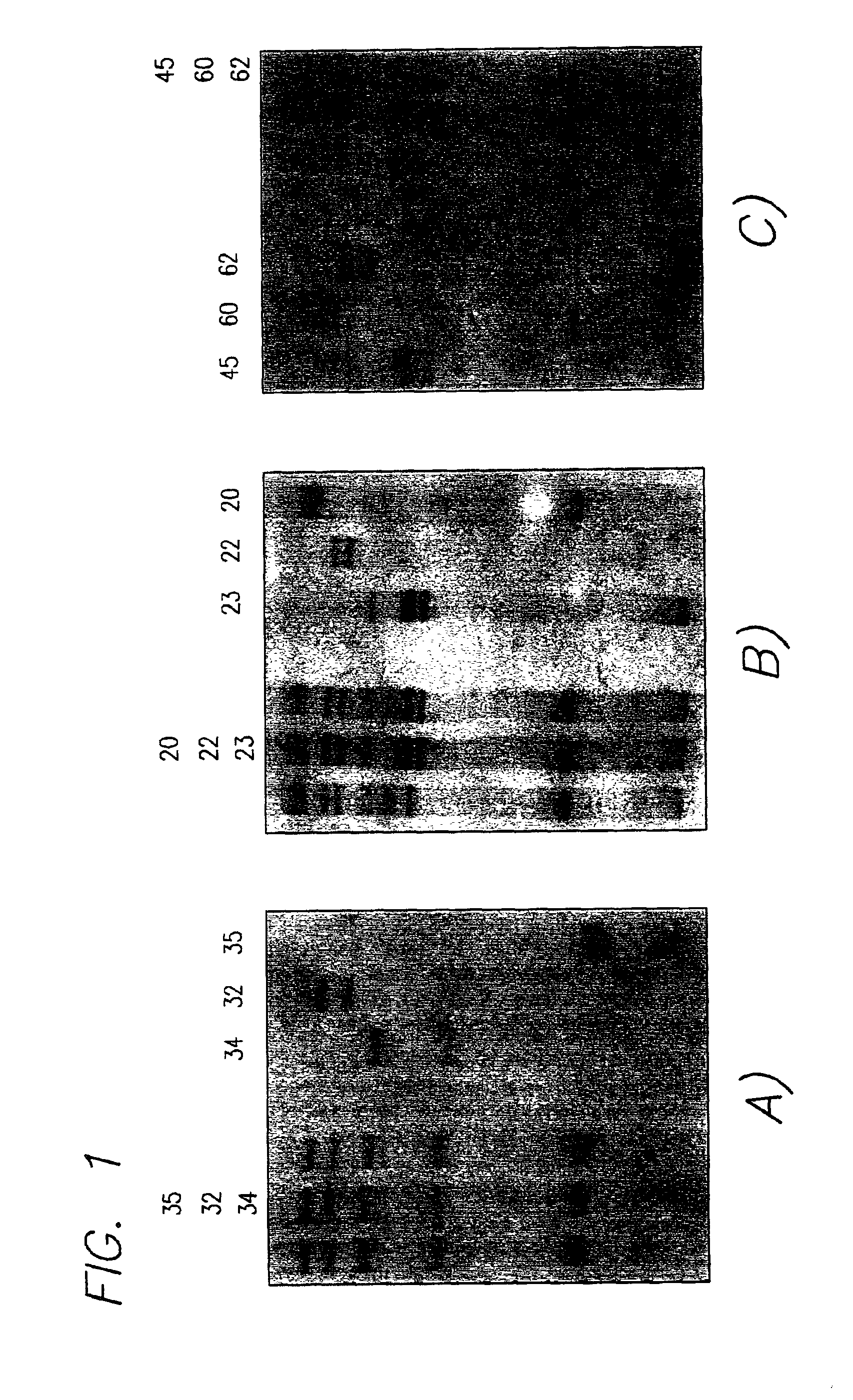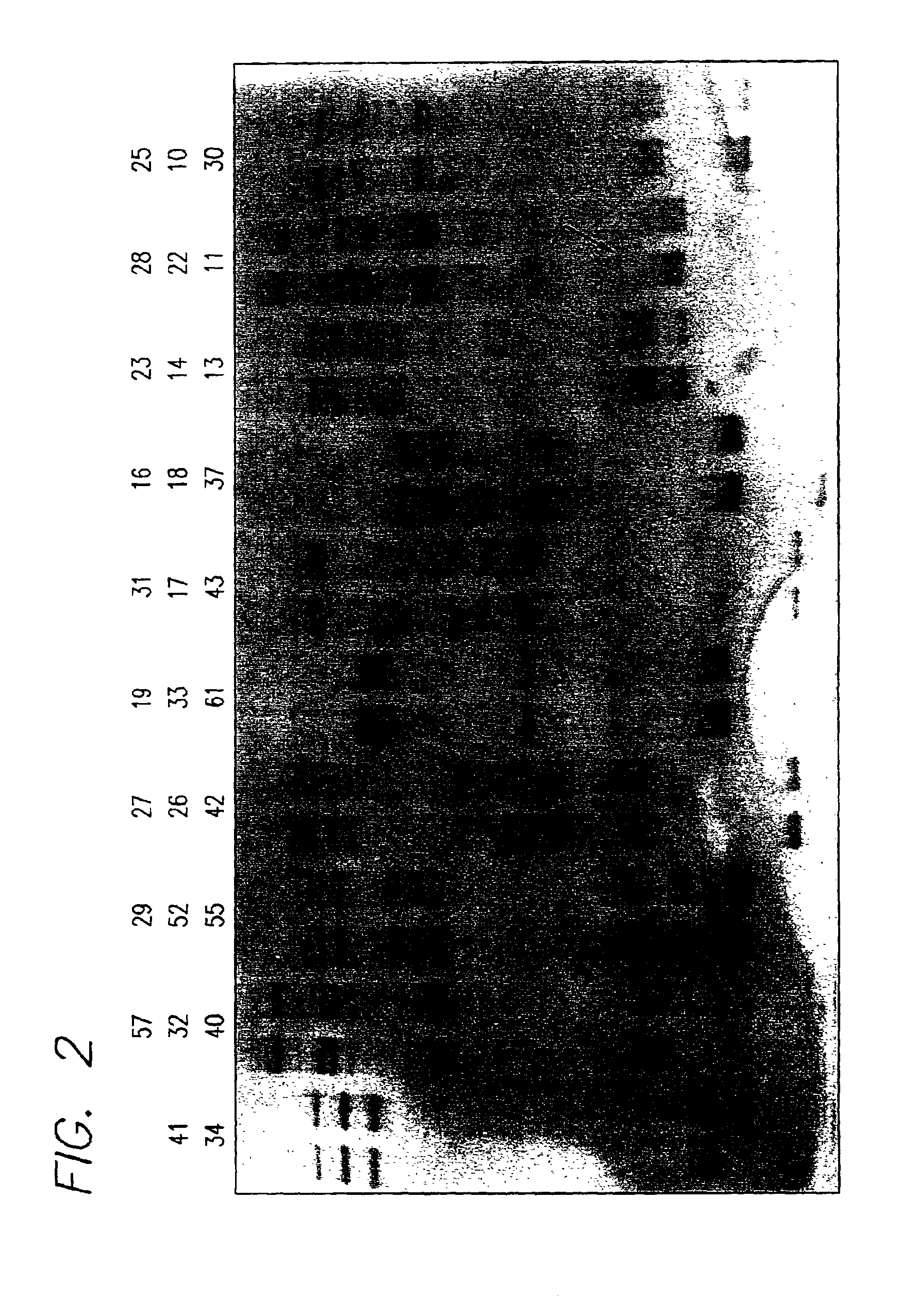Methods for detection of ataxia telangiectasia mutations
a technology of ataxia telangiectasia and mutations, applied in the field of methods for detecting polymorphisms in complex eukaryotic genes, can solve the problems of difficult to distinguish real mutations from errors or normal variations (i.e., polymorphisms)
- Summary
- Abstract
- Description
- Claims
- Application Information
AI Technical Summary
Benefits of technology
Problems solved by technology
Method used
Image
Examples
example 1
Detection of Mutations and Polymorphisms in the ATM Gene by Mega-SSCP
Patients and Methods
Patients
[0192]Ninety-two unrelated A-T patients from different populations (American, Turkish, Polish, Costa Rican, Canadian, and Spanish) were screened. In most of the cases DNA was the only biological material available from these patients. In a few samples, previous screening by PTT (M. Telatar et al., “Ataxia-Telangiectasia: Mutations in ATM cDNA Detected by Protein-Truncation Screening,”Am J Hum Genet. 59:40-44 (1996)) had failed to identify both mutations. In some experiments, DNA from 40 unrelated individuals (80 independent chromosomes) was used to screen for and determine the allelic frequency of specific polymorphisms.
Optimized Single-strand Conformation Polymorphism (SSCP) Technique
[0193]An SSCP technique described previously by Orita et al. (M. Orita et al. “Detection of Polymorphisms of Human DNA by Gel Electrophoresis as Single-Strand Conformation Polymorphisms,”Proc. Natl. Acad. S...
PUM
| Property | Measurement | Unit |
|---|---|---|
| Magnetic field | aaaaa | aaaaa |
| Magnetic field | aaaaa | aaaaa |
| Magnetic field | aaaaa | aaaaa |
Abstract
Description
Claims
Application Information
 Login to View More
Login to View More - R&D
- Intellectual Property
- Life Sciences
- Materials
- Tech Scout
- Unparalleled Data Quality
- Higher Quality Content
- 60% Fewer Hallucinations
Browse by: Latest US Patents, China's latest patents, Technical Efficacy Thesaurus, Application Domain, Technology Topic, Popular Technical Reports.
© 2025 PatSnap. All rights reserved.Legal|Privacy policy|Modern Slavery Act Transparency Statement|Sitemap|About US| Contact US: help@patsnap.com


